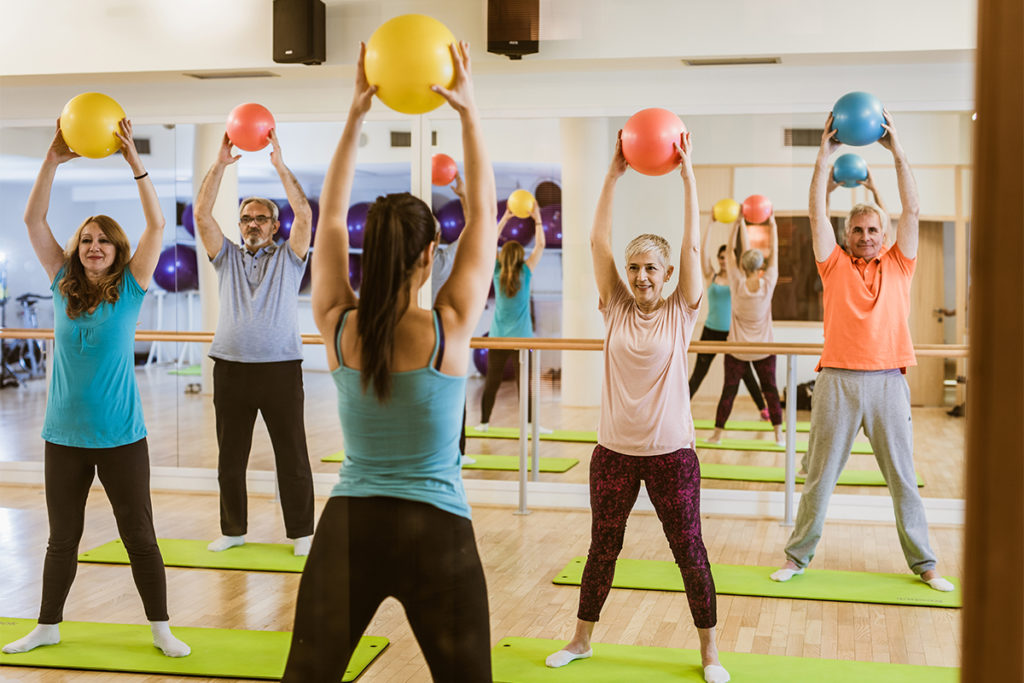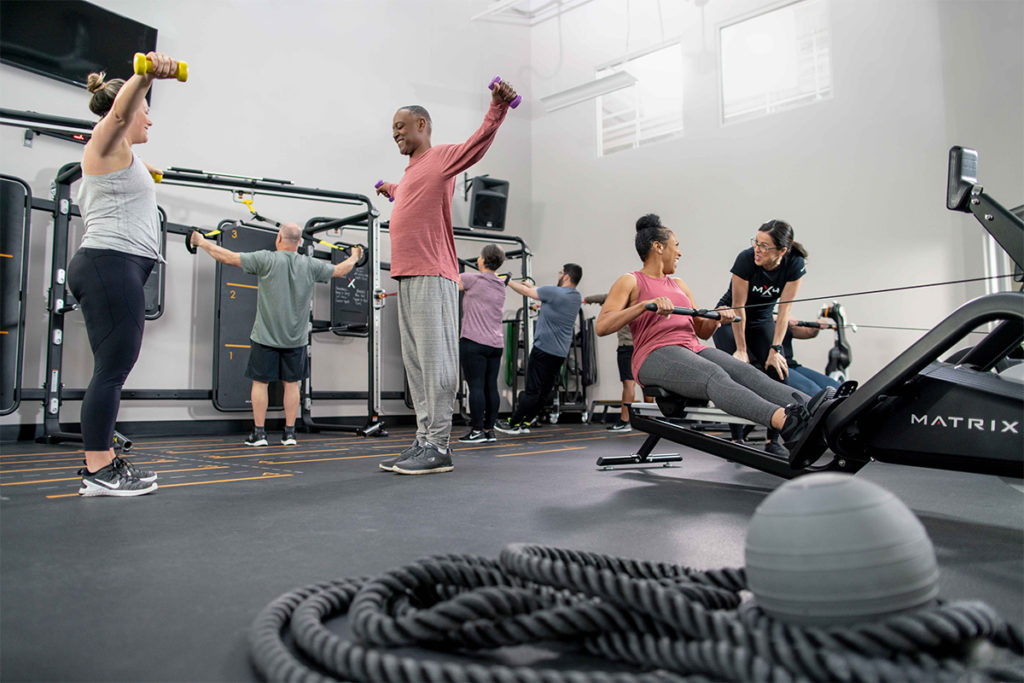Selling to Seniors
Tips for attracting America’s fastest-growing population of fitness clients.

Medicine and technology are making life better for 21st century Americans. Doctors help us fight disease and infection, while computers let us access information and communicate at warp speed. Quality of life is on the rise, and so is quantity of life: as people live longer, the senior population continues to grow every year. Retirees often have years, or even decades, left to live, and America now has more centenarians (those who’ve made it into triple-digit territory) than any other country. As you might expect, older Americans have also become the fastest-growing population of personal training clients. Here are some things to consider when pitching your services to seniors.
Staying Alive
While more people than ever are experiencing longer life spans, simply avoiding death isn’t all we want for ourselves as we age. Staying alive and truly living are not the same thing. More seniors are realizing that taking good care of their bodies is integral to sustained longevity. For older people who are sedentary and/or overweight, hiring a personal trainer can potentially be the first step toward changing their lifestyles and being able to fully enjoy their golden years. The value of personal training for older adults isn’t about getting a six-pack or being bikini-ready; it’s about staying healthy and able-bodied long enough to attend a granddaughter’s graduation or dance at a grandson’s wedding. When you look at it this way, having a personal trainer may be more of a necessity than a luxury for older people.
Believe in Your Product
Remember, when you’re pitching personal training, your product is you. If you don’t genuinely believe your personal training services will make a meaningful impact on clients’ lives, how can you expect your clients to believe that? Pitching training to sedentary people offers them an opportunity to dramatically improve their quality of life. This is especially the case for senior citizens. A trainer who sees the urgency for an older, deconditioned individual to begin an exercise program can more effectively present that importance to the potential client. After all, someone who is 65 could have 20–40 more years to live. Studies have continually shown that those who are physically active and maintain a low body weight live the longest and get the most enjoyment out of their golden years.
Don’t Be Pushy
While you want to stress the importance of hiring a trainer when dealing with the senior population, you don’t want to scare potential clients by telling them they will die if they don’t start exercising. Hiring a personal trainer can be intimidating for any client, and older people who are new to exercise can be especially prone to feeling out of their element in a fitness facility. Listening to older clients’ needs and addressing their concerns are subtle skills, especially for young trainers who have a hard time relating to seniors. It can also make for a potentially strange dynamic when people in their 20s act as authority figures to seniors three times their age.
Make Exercise Fun
When dealing with older clients, you don’t want to sound like a know-it-all or make them feel you are talking down to them. The most successful way to sell training to senior citizens (or anyone for that matter) is to make it fun! Projecting a positive attitude can be infectious; instead of harping on the consequences of sedentary living, focus on the ways in which personal training can improve life. Show seniors that they shouldn’t view exercise as something they must force themselves to do, but rather as something they get to do. If you can make it an enjoyable, enriching process, the motivation to continue becomes about more than just physical health. Personal training will undoubtedly improve their everyday life if they commit to it, but it can also be an enjoyable process along the way. A good trainer knows how to make someone feel that right from the beginning.
Empathize With Clients
A lot of personal trainers have forgotten what it feels like to be new at the gym. It is key to be able to put yourself in your clients’ shoes. Forming new habits can be especially difficult the longer we’ve been stuck in our old ways. It’s easy to resolve to start a new exercise regimen, but the tricky part is following through on those early ambitions and achieving long-term consistency. This is especially true for seniors, as they often feel limited and are more likely to have health issues and/or encounter other bumps in the road. One of the best things a trainer can do for clients is empower them—once clients begin to see how much they are capable of, exploring the world of fitness can become an exciting prospect. Even experienced exercisers who don’t fancy themselves as “someone who needs a trainer” can benefit from a few sessions to get new ideas and have their limits safely tested—this is especially true for seniors, as they are usually more susceptible to injuries.
Make an Emotional Connection
Once you’ve got someone sold on the importance of hiring a trainer, the only hurdle left to overcome is price. Personal training might seem expensive to those who doesn’t fully understand what we provide, so it is up to you to make them see the value of working with a trainer. Remember that the first word in “personal trainer” is personal.
Ask specific questions and find out all the details of your potential clients’ situations so you can tailor your sessions to them. If they tell you a specific goal (perhaps one client wants to run a charity 5K, while another simply wants to carry his 3-year-old grandchild on his shoulders), remind them of that goal and the specific ways that working with you can get them there.
Older people often have more savings than younger clients, so if you can show them the value in having a personal trainer, it shouldn’t be too hard to persuade them to invest in a package of sessions. Offering a senior discount could be an extra incentive. If they are retired, they will likely be able to work out during off-peak times, which could make giving them a price break worth your while. By taking the time to get to know people and working within their budgets, you show them you are genuinely invested in their fitness and not interested only in a paycheck.
Try Before You Buy
People who’ve never hired a personal trainer often don’t realize how rewarding the service can be. Offering prospective clients a complimentary or discounted first workout so they can try out your services is a great way to show them exactly what you can provide. It’s also easier to make that emotional connection with someone when you’ve spent an entire hour together.
However, be careful that you don’t allow people to take advantage of you. The satisfaction you’ll feel from helping clients develop their bodies is a huge part of what makes personal training worthwhile, but it won’t pay the bills. The first session’s on you, but after that you deserve to be compensated for your time and expertise.
The Numbers Game
Of course you aren’t going to sell personal training to every prospective client. Even if you do everything right, some people just won’t be interested. Older people in particular can sometimes be strongly set in their ways and harder to get through to. It’s important to be able to take rejection and learn from each interaction rather than get frustrated. Talk to as many people as possible and try to maintain a positive and friendly attitude. If you can sell training to even one out of every 10 people you prospect, the numbers will eventually add up. Put it out there to every potential customer you encounter. Be patient, believe in yourself and always give your best effort. In time, the rest will fall into place.
© 2011 by IDEA Health & Fitness Inc. All rights reserved. Reproduction without permission is strictly prohibited.
Try this sample dialogue (or tailor it to your style) with older clients you are prospecting for personal training services.
Trainer: Have you ever considered working with a personal trainer?
Prospective Client: I don’t need a trainer. I already know how to use all the machines.
Trainer: That’s great that you have experience, but personal trainers do much more than just show people how to use the machines.
Prospective Client: Like what?
Trainer: We can assess your strengths and weaknesses and design a program that is best for you. We also provide motivation and accountability and help to ensure your safety.
Prospective Client: Hmm. . . . I hadn’t considered all that, but I don’t have the money to hire a trainer anyway.
Trainer: I hear you—the economy is rough these days. We’re actually offering a special discounted rate for seniors right now. Tell you what—I’d like to give you a complimentary session so you can see for yourself what I can do for you. If you like the workout, we can figure out a payment plan that fits your budget. When is the next time you are planning to come to the gym?
Prospective Client: I’ll be back again Thursday afternoon.
Trainer: That’s great. Let’s set up our first workout for Thursday. How’s 1:00 pm?
Prospective Client: Okay. Where should I meet you?
Trainer: Meet me by the front desk. Let’s exchange numbers, and I’ll call you Wednesday to confirm. You can feel free to call me, too, if you have questions.
Prospective Client: Thanks!





